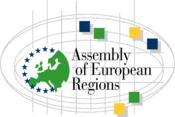EU Organisations
Assembly of European Regions (AER)

Introduction
The Assembly of European Regions was established in 1985, with the aim of enhancing the voice and the position of Europe’s regions. It has achieved great success over this period, with many European countries implementing regional reforms and with a significant improvement in the role of the regions in European decision-making.
The AER is the political voice of the regions and the key partner for the European and international institutions on the core issues of regional competence. The AER promotes the diversity of the regions, subsidiarity and democratic regional structures.
Structure, key stakeholders and partners
The Assembly of European Regions is the largest independent network of regions in the wider Europe, bringing together 270 regions from 34 countries and 16 interregional organisations.
The AER is governed by the following structures: the General Assembly consisting of political representatives of the AER member regions, the Bureau and the Presidium.
Priorities and activities
AER key Priorities for 2007- 2012 period are the following:
- Promoting the modernisation and internationalisation of regional governance;
- Promoting innovation, growth and employment in Europe’s Regions;
- Addressing the challenges of demographic change, health, migration and social exclusion;
- Ensuring sustainable development and combating environmental degradation;
- Delivering democracy through diversity of culture, media and education;
- Creating a secure environment for citizens.
AER key areas of activity are the following: Cohesion policy, economic development, innovation and research, employment, knowledge society, rural development, agriculture, regional airports, renewable energies and energy efficiency, environment, regional produce, tourism. The strengthening of a sustainable EU rural development policy lays at the heart of AER's action. In that context, AER working group on Rural Development is working in the field of the CAP 2014+.
Further information
- Website
- Agriculture and Rural development webpage
- Events
- e.delangle@aer.eu; c.dawans@aer.eu
- Address: Headquarters: 6 rue Oberlin F-67000 Strasbourg
- AER Brussels Office: 210 Avenue Louise B-1050 Brussels
- Social media: Twitter; Facebook



